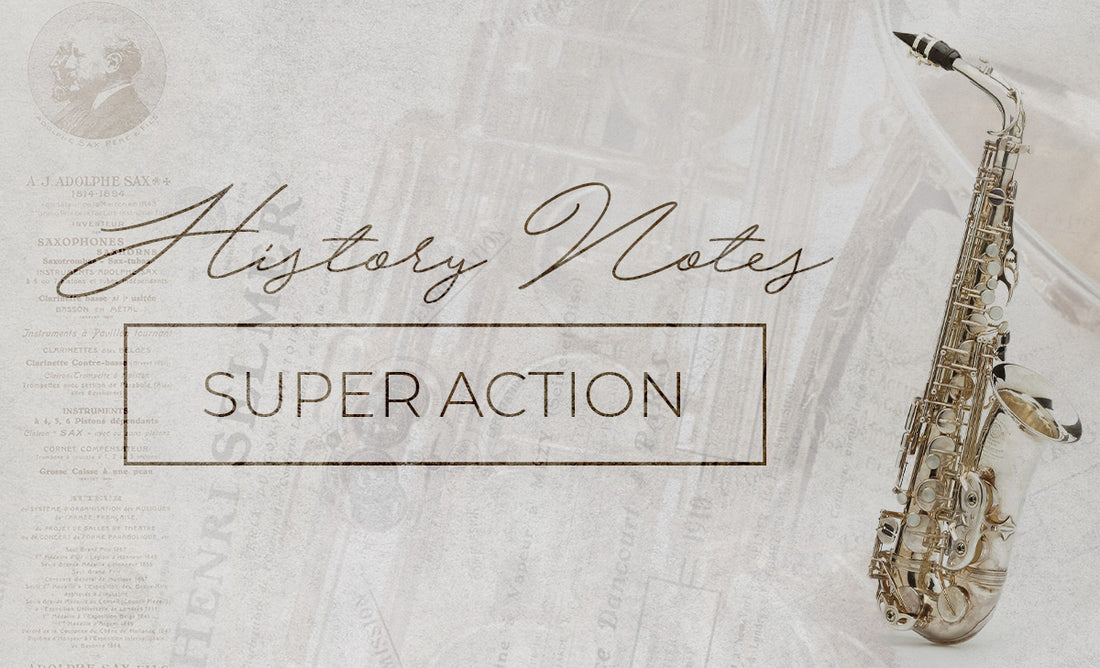History Notes #09 : The Super Action

"When a number of modifications were made to the Selmer saxophones in early 1947, the American distributor decided that a new name was needed. They came up with the name Super Action. At the time, it was the Super Action, but we now often call it the Super Balanced Action to distinguish it from the later Super Action 80 that came out in 1980 and 81.
The Super Action featured a number of improvements and adjustable GG sharp stack, but most importantly, it took the lower stack (the bottom half of the tone holes) and rotated them to the right. It makes a big difference in playing, especially the tenor, when you're going to play it in front of you. The old Balanced Action, with all the tone holes in a row, worked just fine when you're playing on the side in a sitting position, like in a big band. But as jazz took off and musicians were standing and performing and improvisation became a bigger issue, the rotated tone holes was a major advantage.

The Super Action altos started production just after the 33,000 serial number. The tenors came along a little later, around 34,000, the baritones switch to Super Action at 36,000 and sopranos at 39,000. The sopranos did not have offset tone holes, but they did introduce one of the key Super Action features, which was the G sharp G adjustment bar with screws in the top. It made it a lot easier to adjust the instrument.
 Early in the production, several key changes were made in both the Alto and the tenor to the length of the bow and the bell in an effort to deal with some intonation issues. So by 34-35,000, there were some adjustments in the tenor, which were quickly followed in the auto. A number of short design changes happen. They settle down around the 37,000 and from 37,000 to the end of the run at 55,000, the bow and bell length were pretty standard.
Early in the production, several key changes were made in both the Alto and the tenor to the length of the bow and the bell in an effort to deal with some intonation issues. So by 34-35,000, there were some adjustments in the tenor, which were quickly followed in the auto. A number of short design changes happen. They settle down around the 37,000 and from 37,000 to the end of the run at 55,000, the bow and bell length were pretty standard.
Total production numbers for the Super Action from 1947 to 1955 was about 22,000 instruments, with about 12,000 altos, 9,000 tenors and about 500 each for baritones and sopranos. Now the baritones introduced their very first Low A baritones in the Super Action. There were about 180 Low A baritones. The early ones had a two-part bell because they didn't have a mandrel long enough to turn the Bell in one piece. In early 1952, they managed to get this sorted out, and from 52 to 55 the Low A baritones have a one-piece bell.
So for collectors out there, there is a very small number of two-piece Super Balanced Action Low A baritones."
► Subscribe to our youtube channel so you don't miss any episode
► Next episode:Mark VI
► Discover History Notes as a podcast